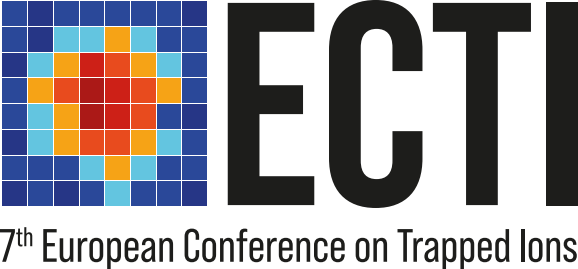Speakers
Description
As the simplest molecules, molecular hydrogen ions (MHIs) are calculable, with ab initio theory reaching uncertainties for the prediction of transition frequencies only a factor of 10 larger than those achieved for the hydrogen atom [1]. They thus offer great potential for the extraction of fundamental constants as well as for tests of QED and search for BSM physics.
We present an overview of recent our experiments on $\text{HD}^{+}$, most notably the single-photon spectroscopy of a fourth overtone vibrational transition [2]. From this, a value for the combination of fundamental constants $\mu/m_{e}=m_{p}m_{d}/(m_{p}+m_{d})m_{e}$ can be extracted, which is in reasonable agreement with mass spectrometry experiments in Penning traps [3-6]. Moreover, because the latter measurements rely on the classical motion of baryon-containing particles, while in MHI spectroscopy the quantum mechanical motion of the two nuclei is intrinsic, the agreement can be regarded as a test of the quantum behaviour of charged baryons. We show that a related test can be obtained by comparing the ratios of vibrational frequencies with the corresponding ab initio prediction.
Similar to previous measurements on MHIs [7-9], a test of physics beyond the Standard Model of particle physics is undertaken by probing for a hypothetical fifth force between the two nuclei. No evidence is found.
We also present ongoing work: high-accuracy spectroscopy of electric-quadrupole transitions in MHIs [10] as well as the current status of a single-ion trap apparatus [11]. These developments pave the way towards higher accuracy and less-studied MHI species.
This work has received funding from the European Research Council (ERC) under the European Union’s Horizon 2020 research and innovation programme (grant agreement No. 786306, “PREMOL”).
[1] V. I. Korobov and J.-P. Karr, Phys. Rev. A 104, 032806 (2021).
[2] S. Alighanbari et al., Nat. Phys. 10.1038/s41567-023-02088-2 (2023).
[3] F. Köhler et al., At. Mol. Opt. Phys. 48, 144032 (2015).
[4] F. Heiße et al, Phys. Rev. A 100, 022518 (2019).
[5] S. Rau et al., Nature 585, 43 (2020).
[6] D. J. Fink and E. G. Myers, Phys. Rev. Lett. 127, 243001 (2021).
[7] S. Alighanbari et al., Nature 581, 152 (2020).
[8] M. Germann et al., Phys. Rev. Research 3, L022028 (2021).
[9] I. V. Kortunov et al., Nat. Phys. 17, 569 (2021).
[10] M. R. Schenkel et al., subm. (2023).
[11] C. Wellers et al., Molecular Physics 120, e2001599 (2022).

